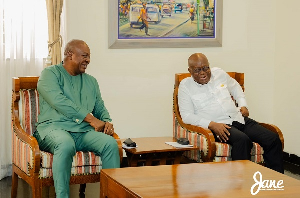Marketing and Public Affairs Manager of Tema Port, Serwaa Opoku-Fosu, has reaffirmed that the paperless processes at Ghana’s Ports have improved the turnaround time of cargo, transparency and eased of doing business at the Port.
“There is reduction in the cargo clearance time, we position the cargo for you when you’re ready for examination. Also, an agent can work on multiple consignments at a time, and the face to face interactions have been reduced drastically.”
Speaking at the United Nations Public Service Day celebrated in Accra, the Marketing and Public Affairs Manager of Tema Port emphasised that the much-touted paperless system is just an aspect of the single window paradigm, which also includes the mandated joint inspection, and the removal of custom barriers along Ghana’s transit corridor which were championed by the Vice President of Ghana to reduce bottlenecks that hamper the seamless clearance of goods, from Ghana’s ports.
“When Ghana signed on to the trade facilitation agreement of the WTO in January 2017, one of the key aspects was that we needed a single platform where all the processes are done to ensure trade is facilitated faster and to reduce the cost of doing business, and that is how the single widow system came into being. The paperless is just a part of the single window,” she articulated.
The UN Public Service Day celebrates the value and virtue of public service to the community and highlights the contribution of public service in the development process.
She added that the Ghana Ports and Harbours Authority is also keen on security, as it ensures, that, practices conform to International Ship and Port Facility Security Code (ISPS).
“We have automatic identification systems for vessels, where we are able to tell within a certain nautical radius, which vessels are in our waters. We had also by virtue of the International Port Facility System Security Code and also deplored CCTV all around the port. And then we have our Ghana Ports Information System, which is our local broadcasting network within the port environs, grown into the Eye on Port,” she said.
The Marketing and Public Affairs Manager also explained that efforts are still being made to perfect the paperless port clearance system.
“All of us, as stakeholders need to come and ensure that we fully integrate the system and customs is expected to develop, what they call the robust risk engine, where they have profile all importers so well that they can segregate regular complaint importers, and have then run through quicker inspection procedures to speed their clearance. Then we as a port authority, have to streamline our tariffs,” she revealed.
Business News of Tuesday, 16 July 2019
Source: EOP
Paperless clearance system improves Ghana's port operations
Ghana's Paperless System forms part of future reality - Ebenezer Asante
0 seconds of 2 minutes, 1 secondVolume 90%
Press shift question mark to access a list of keyboard shortcuts
Keyboard Shortcuts
Shortcuts Open/Close/ or ?
Play/PauseSPACE
Increase Volume↑
Decrease Volume↓
Seek Forward→
Seek Backward←
Captions On/Offc
Fullscreen/Exit Fullscreenf
Mute/Unmutem
Decrease Caption Size-
Increase Caption Size+ or =
Seek %0-9
Paperless Port, Zipline projects implemented at zero cost to government - Bawumia
0 seconds of 3 minutes, 0Volume 90%
Press shift question mark to access a list of keyboard shortcuts
Keyboard Shortcuts
Shortcuts Open/Close/ or ?
Play/PauseSPACE
Increase Volume↑
Decrease Volume↓
Seek Forward→
Seek Backward←
Captions On/Offc
Fullscreen/Exit Fullscreenf
Mute/Unmutem
Decrease Caption Size-
Increase Caption Size+ or =
Seek %0-9

















